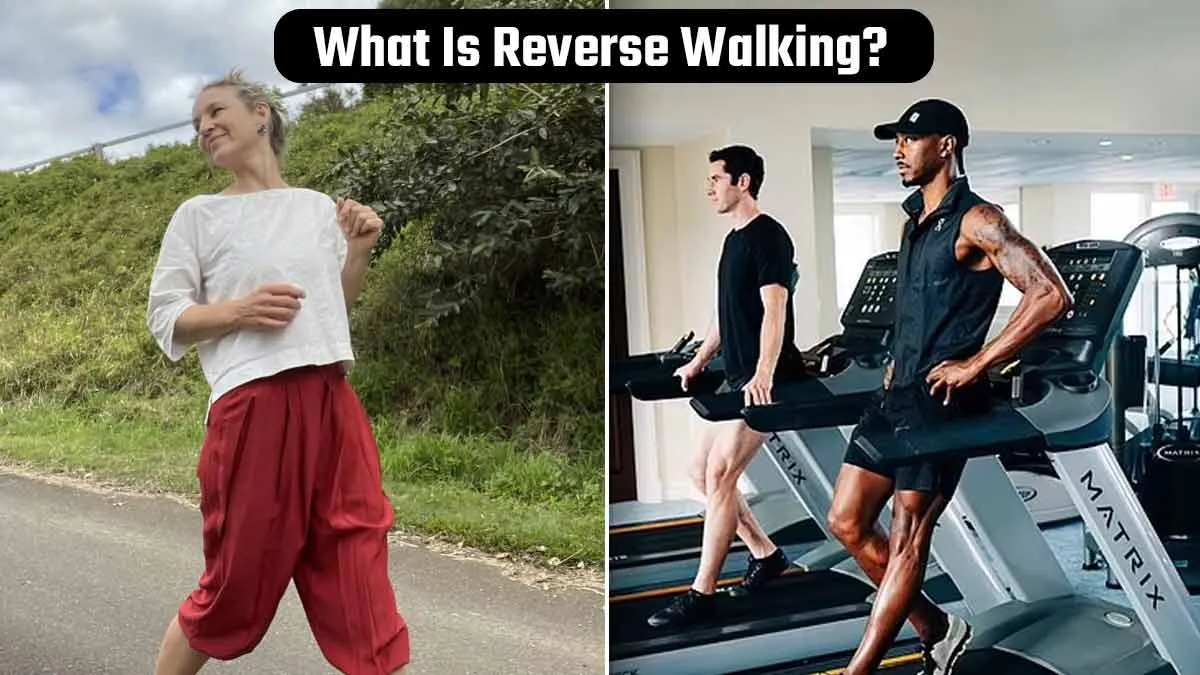
Imagine walking backward to boost your brainpower and protect your knees—sounds unconventional, right? Reverse walking, the simple act of stepping backward, is gaining traction as a fitness hack with surprising benefits. While it might look quirky, experts say this low-impact exercise can strengthen muscles, reduce joint strain, and even sharpen your mind. Whether you’re recovering from an injury, looking to spice up your workout, or wanting to improve balance, reverse walking could be your new secret weapon. Let’s explore why orthopedic surgeons and fitness trainers are raving about this backward trend and how you can safely add it to your routine.
Table of Content:-
What is Reverse Walking?
View this post on Instagram
Reverse walking, or retro walking, involves moving backward either on a treadmill, track, or open space. Unlike regular walking, it shifts how your muscles and joints work, offering unique physical and mental rewards. Dr. Anuj Kumar Kadian, Orthopedic Surgeon, Newlife Multispeciality Hospital and Trauma Centre, Gurugram, explains: “Reverse walking reduces knee joint pressure, especially for those who run, squat, or have existing knee pain. It’s a small trick with big benefits for both the body and brain.”
Key Benefits of Reverse Walking
-1742544569171.jpg)
1. Protects Knee Health
- Reduces Joint Pressure: Walking backward shifts weight distribution, easing stress on the knee joints. “It’s ideal for runners or gym-goers who overload their knees,” says Dr. Kadian.
- Strengthens Hamstrings & Glutes: Moving backward activates underused muscles in the back of your legs, improving posture and walking mechanics.
- Rehabilitation-Friendly: “Patients with knee pain or post-surgery can use reverse walking to rebuild strength safely,” he adds.
2. Boosts Brain Function
- Improves Coordination & Balance: Navigating backward challenges your brain to process movement differently, enhancing spatial awareness.
- Sharpens Focus: The need to stay alert while reversing trains your mind to react quickly, which may lower the risk of age-related cognitive decline.
3. Enhances Muscle Balance
- Corrects Muscle Imbalances: Most workouts target quads (front thighs). Reverse walking engages hamstrings and glutes, preventing imbalances that lead to injuries.
- Supports Spinal Health: Better posture from strengthened glutes reduces strain on the lower back.
4. Burns More Calories
Backward walking requires 30% more energy than forward walking, making it a sneaky way to torch extra calories.
ALSO READ: Training Shoes Vs Running Shoes: Expert Explains Which Are Suitable for Walking
Science Backs Reverse Walking
A 2019 study in the Journal of Physical Therapy Science found that reverse walking significantly improved balance and muscle strength in older adults. Participants who practiced it for 10 minutes daily, three times a week, showed better knee stability and reduced fall risks. Dr. Kadian notes: “This aligns with what we see clinically—reverse walking is a safe, effective tool for joint and brain health.”
How to Start Reverse Walking Safely
-1742544592206.jpg)
Dr Kadian shares these tips for beginners:
- Start Slow: Begin with 2–3 minutes daily on a flat surface (park or treadmill). Gradually increase time as you gain confidence.
- Use Support: “If you’re new to reverse walking, hold a railing or wall for balance. Avoid leaning on treadmills,” he advises.
- Skip Speed: Focus on control, not speed. Short, deliberate steps work best.
- Choose Safe Surfaces: Opt for empty tracks, grassy parks, or treadmills (set to 1–2 km/h speed). Avoid uneven terrain.
- Posture Matters: Keep your back straight, shoulders relaxed, and gaze over your shoulder (not down).
Who Should Avoid Reverse Walking?
- Those with severe vertigo or balance disorders.
- People recovering from recent leg/knee surgery (consult a doctor first).
ALSO READ: Why Do Wrists Hurt After Waking Up In The Morning? An Expert Explains The Reason
Final Takeaway: Walk Backward, Move Forward
Reverse walking is more than a funny-looking workout—it’s a science-backed way to protect your knees, sharpen your brain, and build a stronger body. As Dr Kadian puts it: “Just 5 minutes a day can make a difference. It’s simple, free, and suits all fitness levels.” Whether you’re a gym enthusiast, senior citizen, or knee pain sufferer, give this underrated exercise a try.
Also watch this video
How we keep this article up to date:
We work with experts and keep a close eye on the latest in health and wellness. Whenever there is a new research or helpful information, we update our articles with accurate and useful advice.
Current Version